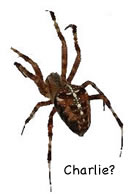Children’s appreciation for nature develops at a young age, so begin environmental education for kids as early as possible.
Kids watch and imitate the attitudes and actions of the adults around them towards living things.
Whether it’s a jar of worms, a few snails, butterfly eggs, tadpoles or sow bugs, young children’s eyes light up when you bring living things into the classroom.
They learn about nature through real interactions with it, not from filling out stacks of worksheets about nature.
Once children have had opportunities to investigate what you bring into the classroom or find in the playground, they’re motivated to ask questions, to look into their ideas further and/or are motivated to complete projects designed to share their new knowledge.
Focus on one small part of the environment
Many kids have had few opportunities to experience nature. As you model excitement about nature and caring for the environment, your students will become enthusiastic also.
Choose one small aspect of the environment such as worms, slugs, squirrels, or insects. Children become aware of attitudes, their responsibility towards, and caring for the environment through the study of one small section of it. A slug, rather than the whole forest.
See a list of specific environmental skills to integrate with subject areas…
How do I make environmental education part of my classroom routines?
As much as possible bring living creatures and plants into the classroom. Young students will connect to the natural environment as they have regular interactions with bugs, tadpoles, spiders, slugs and more. Model respect and proper care of living creatures and your students will follow your example.
As mentioned before, emphasize to children how to respect and treat living creatures when studying them. Tapping on bug bottles, shaking the containers or leaving living things on a hot window sill, should all be discouraged.
Teach the “Four Ls of learning about living creatures,”
- Look at them
- Learn about them
- Let them go
- Leave them alone.
After studying the animals make a big deal of letting them go back into their natural environment. Have a special field trip to the pond where the tadpole eggs came from or a “Release the Butterflies” day. Emphasize how important it is that the critters go back to their original homes.
Teach children to have empathy for living creatures
Role play having the roof ripped off your classroom and a big hand reaching down to pick you up. How would you feel? What if someone put you in a jar and shook it? What if someone lifted your house up and then threw it aside? Show your students children how to carefully put a log back in the same place if they move it to look for insects.
How to organize for environmental studies
Some teachers I talk to are overwhelmed at bringing living creatures into their classroom. If you already have a science observation center set up in your classroom, it is easier to introduce living things into your classroom.
Collect:
- one or two large restaurant size glass gallon jars or large goldfish bowls
- and/or an empty aquarium about 20 inches long
- fine mesh wire to make lids for the aquarium and/or jars
- a shelf at least 18″ wide for the aquarium or jars where kids can view it/them from three sides
Set up in the science observation center:
- animals to observe
- magnifying glasses and storage
- books about the creatures in the aquarium
- recording booklets, nature journals, pencils, crayons, markers
- craft material to make 3D representations of what is observed
Students take part in setting up, learning about and caring for living creatures starting in September, as a regular part of classroom routines.
Get outside…
1. When children have the opportunity to be outside, they’ll investigate, ask questions, and explore without teacher led experiences. There are many opportunities for developing literacy, math and science skills when kids are outdoors. Encourage students to notice the habitat that specific insects choose to live in.
Do sow bugs like it in a dry or moist place?
The worms come to the surface when it rains. Why?
What are the lumpy piles of black dirt on the lawn?
2. Growing an edible children’s garden gets kids excited about the environment too.
3. Throughout the year, include as many field trips outside as possible. Our local parks offer many nature programs in the forests and beaches around Vancouver Island.
Model bug friendly behavior…
How you react to finding a spider or wasp in your classroom will also have an influence on how your students react. As part of teaching environmental education for kids, smile, look delighted when a spider walks across the classroom and say,”Oh that’s our friend, Charlie, did he come in for a visit again?”
Then model care and respect when removing the insect from the room. Young children quickly imitate your behaviors. I’ve often had ex-students return to my classroom regularly to visit the class “wildlife”.
Teach the children to be observant rather than memorize names…
- Rather than focusing on teaching the proper names of pond creatures for instance, let the students observe for themselves and record what they notice about the creatures.
- Ask them to name the creatures based on their own observations, “Red dot bug” and “Candy stripe bug” are fine to begin with.
- Teaching correct creature names too early can inhibit further observation.
- Give kids a couple of weeks of observing a tank of pond water and with prompting, the children notice more and more details about the creatures.
- Supply the students with plenty of materials to make observation booklets such as “My Pond Book”.
